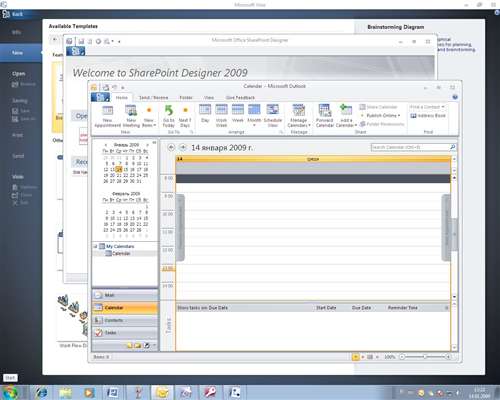Focus Question: What are the standard software applications found on most computers today and what open sources software alternatives are there?
Software is for computer instructions, it is a collection of codes that tells computer hardware to perform certain functions. There are two types of software’s, system software and application software. System software is responsible for the overall control of the computer functions and application software performs specific functions in ways to specialize different services such as, word processing, databases, spreadsheets, power point and several more applications.Students and teachers use a variety of these application while learning new things. Some of the few programs that are most commonly used are word processing, presentation software, spreadsheets, electronic databases and programs for other specific functions.
Another commonly used software is the open source software which is opened to the public to use, cop and recreate. These types of software’s can be free but also could have a little cost fee included with the uses. Also it is said that some educators believe that it is saver to use open source software because you receive more privacy.
Tech Tool: A Mathematical Learning Game- Zoombinis Logical Journey  |
| Photo credit to Ivan Walsh from Flickr |
Zoombinis Logical Journey is game designed to teach critical thinking, problem solving and mathematical learning to elementary students. There are multiple levels throughout the game. The game focus more on asking children to uses their powers of observation and problem solving to help them figure out the puzzles. Each Zoombinis has their own characteristic that differentiates themselves from one another. It is up to the children to choose the one that will help the best to figure out the puzzle. From what I have read I think this is a really interesting game for the elementary school students. They are learning math in a fun and neat way.
Summary & Conclusion:
Chapter 7 is about how educational software and programs help inquire learning for students starting in kindergarten through twelfth grade. The chapter explains how software’s are a great impact on teachers and students and what there functions are. They also introduce several different types of software’s, which are system software, application software and open source software. As a teacher you can promote all types of software in varieties of ways. For example, educational software can be used to promote skills-based learning, problem solving and by inquiring learning with many other combinations. Later on, they explain how teachers can use computer games and simulations as learning resources. Some children love to spend time playing games! Why not just encourage them to play educational games. By doing so students will be learning without realizing that they are. There are also several tutoring systems that both teachers and students become successful. Tutoring systems have shown to be effective in improving students learning mainly in math. Tutors can be constructed in variety of formats- simulations, games, tutorials and collaborative learning models. With the use of all these types of software teachers can become efficient in teaching their students.
Chapter 7 is about how educational software and programs help inquire learning for students starting in kindergarten through twelfth grade. The chapter explains how software’s are a great impact on teachers and students and what there functions are. They also introduce several different types of software’s, which are system software, application software and open source software. As a teacher you can promote all types of software in varieties of ways. For example, educational software can be used to promote skills-based learning, problem solving and by inquiring learning with many other combinations. Later on, they explain how teachers can use computer games and simulations as learning resources. Some children love to spend time playing games! Why not just encourage them to play educational games. By doing so students will be learning without realizing that they are. There are also several tutoring systems that both teachers and students become successful. Tutoring systems have shown to be effective in improving students learning mainly in math. Tutors can be constructed in variety of formats- simulations, games, tutorials and collaborative learning models. With the use of all these types of software teachers can become efficient in teaching their students.
Resources:
Maloy, R. W., Verock-O, R. E., Edwards, S. A., & Woolf, B. P. (2010). Transforming learning with new technologies. Allyn & Bacon.
Open source software has some real value, including the opportunity to use desired functioning free! :) Some school districts, though, don't like to take advantage as there is no guarantee that they will work, be stable, consistent, etc. I personally like to use a combination of purchased and open sources software. :)
ReplyDelete